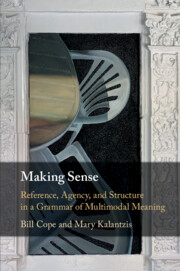Part 1 Reference
Published online by Cambridge University Press: 09 January 2020
Summary
Reference is a phenomenon both of experience and thinking. It happens when a focal point for meaning is selected by the meaning-maker from the infinities of the world. The meaning – taking form as a mental representation, an act or object of communication, or an interpretation – “stands for” something in the world. Reference involves the specification of particular instances and general concepts, their circumstances as entities or actions, and their properties as qualities or quantities. Things in the world might be identified as entities or actions, though, by transposition actions may be construed as entities, and entities as actions. Entities and actions can be particular – a single instance – or multiple, defined in their generality as concepts. By transposition, by way of conceptualization, instances can be connected to the general. This connection of the instance to the general is by means of generalizable properties, including qualities and quantities.
Keywords
- Type
- Chapter
- Information
- Making SenseReference, Agency, and Structure in a Grammar of Multimodal Meaning, pp. 77 - 172Publisher: Cambridge University PressPrint publication year: 2020

